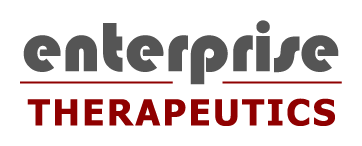Enterprise Therapeutics awarded up to £5.7M ($7M) from Cystic Fibrosis Foundation to Support Clinical Development of Novel Chloride Channel Modulator
- Support for clinical development up to end of Phase 2 for ETD002, first-in-class TMEM16A potentiator for the treatment of cystic fibrosis
- Milestone Funding through Cystic Fibrosis Foundation’s Therapeutics Development Award programme
Brighton, UK, 15 October 2019: Enterprise Therapeutics Ltd (Enterprise), a biopharmaceutical company dedicated to the discovery and development of novel therapies to improve the lives of patients suffering with respiratory disease, today announced it has been awarded up to £5.7M ($7M) funding under the Therapeutics Development Award programme from the Cystic Fibrosis Foundation. The milestone-related funding will support clinical development up to the end of Phase 2 for ETD002 – a first-in-class TMEM16A potentiator that has the potential to treat all persons with cystic fibrosis (CF), independent of their cystic fibrosis transmembrane conductance regulator (CFTR) genotype.
Enterprise Therapeutics is developing novel disease-modifying therapies which target underlying mechanisms of mucus congestion, enhancing the clearance of mucus from the airways, thereby restoring lung function and to reduce morbidity and mortality in CF. The Company’s first-in-class ETD002 programme is targeting the calcium-activated chloride ion channel TMEM16A. By enhancing the activity of TMEM16A, there is increased anion and fluid flow into the airways, thinning the mucus and increasing its clearance from the airways.
CF is a devastating and life-limiting genetic disease. CF patients have a significant reduction in the hydration of their airway mucus, leading to failed clearance, a high incidence of infections, and rapid decline in lung function.
Dr John Ford, CEO, Enterprise Therapeutics, said:
“We are delighted to receive such a significant award from the CF Foundation. This funding will enable critical clinical research to be undertaken on our novel TMEM16A programme, and highlights the potential of chloride channel modulation via alternative channels to deliver innovative and effective treatments for all CF patients.”


